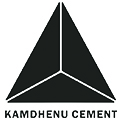Imagine your dream home’s foundation is laid perfectly. The walls are rising, and everything looks on track. But beneath the surface, there’s a silent protector at work, backfilling in construction. This step might not grab headlines, but skip it, and cracks, leaks, or even structural failure could follow.
In simple terms, backfilling in construction is like giving your building a supportive hug. It’s the process of refilling the soil around foundations, trenches, or basements after construction. But it’s far more than just “shoveling dirt back in.” Done right, it shields your structure from water, shifting soil, and time itself.
Let’s break down why this step is non-negotiable—and how to ace it.
What is Backfilling in Construction?
Backfilling in construction is the strategic process of refilling an excavated area (like a trench or foundation pit) with carefully chosen materials. Think of it as reverse digging: once foundations, pipes, or structures are in place, you fill the empty spaces around them.
But here’s the catch: It’s not about dumping soil haphazardly. It involves:
- Material selection: Using soil, gravel, or engineered mixes suited to the site.
- Layering: Adding material in thin, even layers (typically 6–12 inches thick).
- Compaction: Compressing each layer to eliminate air pockets.
Why go through all this trouble? Because loose soil settles. Water pools. Foundations shift. Backfilling in construction stops these disasters before they start.
What is the Importance of Backfilling in Construction?
1. Foundation Support & Stability
Backfill acts like a brace, hugging your foundation walls to prevent leaning or collapse. Without it, soil pressure from rain or gravity can cause cracks or misalignment.
2. Drainage & Water Management
Ever seen a flooded basement? Proper backfill directs water away from your foundation. Materials like gravel or crushed stone create natural drainage paths, stopping erosion and damp walls.
3. Insulation from Temperature Swings
Compacted soil around foundations insulates against heat and cold. This keeps indoor temperatures stable, cutting energy bills by up to 20%.
4. Prevents Costly Repairs
Settling soil causes uneven floors or cracked pipes. Backfilling with compaction minimizes settlement, saving you from future headaches.
Pro Tip: Always wait 5–7 days after pouring concrete before backfilling. Rushing can crack uncured foundations!
Choosing the Right Backfill Material: Not All Dirt is Equal
Backfilling material specification isn’t glamorous, but it’s make-or-break. Here’s a quick guide:
| Material Type | Best For | Avoid If |
| Gravel/Crushed Stone | High drainage zones (e.g., coastal areas) | Budget-sensitive projects |
| Coarse Sand | Pipe bedding, general backfill | Retaining walls (low cohesion) |
| CLSM (Flowable Fill) | Tight spaces, utility trenches | DIY projects (needs pumping) |
| Fine-Graded Soil | Low-drainage sites (with compaction) | Clay-rich or waterlogged areas |
Key Rules:
- Never use organic matter (wood, roots) or debris—they decompose and cause sinking.
- Match native soil where possible to avoid uneven settling.
- Kamdhenu Insight: Our PSC (Portland Slag Cement) is ideal for stabilizing poor soils. Its low heat and high sulfate resistance make it perfect for drainage structures or marine backfills.
The Art of Compaction: Why It’s Non-Negotiable
Backfilling and compaction go hand in hand. Without compression, backfill is just loose dirt waiting to sink. Here’s how to nail it:
Step-by-Step Process:
- Layer: Fill in 6–12 inch layers (thinner for gravel, thicker for soil).
- Moisten: Damp soil compacts best—aim for “holds shape when squeezed” consistency.
- Compact: Use the right tool:
- Plate Compactors: For sand/gravel (vibration-based).
- Rammers/Heavy Rollers: For clay/silt (impact force).
- Repeat: Until the fill reaches ground level.
Density Matters:
- Under roads/pavements: 95% compaction for gravel, 90% for clay.
- Test with a proctor test or hire a geotech engineer for critical projects.
Mistake to Avoid: Over-watering soil. Soggy dirt won’t compact—it just turns to slurry.
The Backfilling Process: A Contractor’s Diary
Ready to backfill? Follow this roadmap:
1. Prep the Site:
- Clear debris, roots, or standing water.
- Ensure foundations are fully cured (usually 7+ days).
2. Choose & Place Material:
- Start with coarse gravel at the base for drainage.
- Use excavators or loaders for efficient placement.
3. Compact in Layers:
- Compact each layer before adding the next.
- Focus on corners—they need uniform support.
4. Slope Away from Foundation:
- Grade the top layer to divert water (1 inch per foot slope).
Why Kamdhenu Cement is Your Backfilling Partner
At Kamdhenu, we know backfilling in construction isn’t just about dirt—it’s about performance. Here’s how we help:
- Cement for Stabilization: Our PSC Cement (with slag content) reduces soil shrinkage and boosts durability in wet/sulfate-rich zones. Perfect for sewage or marine backfills.
- Technical Support: Get expert guidance on soil-cement mixes for challenging sites.
- Eco-Friendly: By using industrial by-products (like slag), we cut waste while building stronger.
Real Impact: A Mumbai housing project used Kamdhenu PSC in CLSM backfill. Result? Zero settlement cracks after 3 monsoon seasons.
Conclusion: Build Smart, Backfill Smarter
Backfilling in construction might be the quietest phase of your build, but its impact echoes for decades. From shielding foundations to slashing repair bills, it’s the bedrock of longevity.
Remember:
- Choose materials wisely—gravel for drainage, stabilized soil for support.
- Compact relentlessly—layer by layer, inch by inch.
- Trust Kamdhenu for cement solutions that turn weak soil into unshakeable ground.
Ready to build something that lasts? Start from the ground up—with smart backfill.
Build Strong. Build Kamdhenu.


